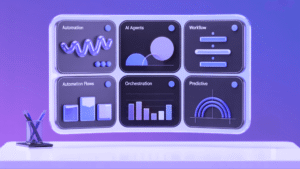Digital platforms dominate PR plans, but the importance of print media in digital PR cannot be overlooked—ignoring print means you miss out on what makes it special: the trust it builds, how it engages multiple senses, and how long it stays relevant. Smart brands are now mixing both approaches to create campaigns that connect more deeply and encourage people to take action.
Why Print Media Matters in Digital PR Strategies
Print continues to offer real value alongside digital efforts. You can touch it, feel it, and trust it in ways that complement what happens online. Research and successful campaigns show that print brings unique benefits to modern PR work.
Many PR professionals have rediscovered print’s power as digital spaces become more crowded. A physical magazine or direct mail piece can stand out when another email or social post might be ignored. The best campaigns use both print and digital together, letting each medium do what it does best.
1. Credibility and Trust: The Print Advantage
Print media earns 82% consumer trust in ads compared to digital, according to a 2024 study by MarketingSherpa. This comes from its careful editing process, physical permanence, and freedom from digital problems like ad blockers or data breaches. For PR teams, getting featured in respected print publications (like industry journals or quality magazines) brings third-party credibility that digital alone can’t match. A 2025 Kantar survey found 65% of consumers see print ads as more genuine than digital ones, making it important for brands trying to stand out in an era of misinformation.
Why This Matters
In a time when fake news and computer-generated content fill digital spaces, print serves as a “trust anchor.” When a respected publication like The Economist or Harvard Business Review features a brand, it shows that human editors not just algorithms have reviewed the content. This is especially important for industries like healthcare, finance, or sustainability, where trust directly affects decision-making. For example, a pharmaceutical company launching a new medication might focus on print placements in medical journals. Doctors, who often question online claims, typically find peer-reviewed print content more reliable leading to higher prescription rates.
2. The Tactile Experience: Multi-Sensory Engagement
Print engages more of your senses: the feel of paper, the sound of turning pages, and sometimes even smell (like perfume samples in magazines). Brain research confirms this: a 2023 National Library of Medicine study showed print creates 70% better brand recall than digital because it requires less mental effort. Physical materials also stimulate the brain’s reward center 2.5 times more than digital ads.
The Psychology of Touch
The act of physically holding a brochure or catalog creates a subconscious feeling of ownership. This “endowment effect,” studied by behavioral economists, makes people value items they can touch more highly. Luxury brands like Rolex or Chanel use this by investing in thick, textured paper for their catalogs turning marketing materials into keepsakes. For nonprofits, storytelling you can touch drives donations. A 2024 WWF campaign paired print mailers with textured animal illustrations and augmented reality features. People who received the print version gave 34% more than those who only saw digital ads.
3. Cutting Through Digital Noise
The average person sees 6,000–10,000 digital ads every day, leading to “banner blindness.” Print stands out from this chaos: direct mail needs 21% less mental effort to process than digital content, and 91% of adults still engage with print magazines, according to a 2025 Association of Magazine Media report.
The Attention Problem
Digital platforms have trained users to scroll quickly without thinking, but print requires intention. Someone holding a magazine is three times more likely to read an article completely compared to scanning a webpage (2025 Media Consumption Report). This focused attention is valuable for complex messages like software companies explaining AI features or sustainability initiatives that need detailed storytelling. Take Mailchimp’s 2024 rebrand: They combined digital ads with a limited-edition print magazine mailed to 50,000 small business owners. The magazine’s creative illustrations and success stories led to a 27% increase in premium plan sign-ups, showing print’s ability to convert customers when they feel overwhelmed online.
4. The Hybrid Approach: Bridging Print and Digital
QR codes, augmented reality, and NFC tags turn print into interactive gateways. For instance, QR codes on direct mail pieces drove 30% of recipients to websites in 2025 campaigns, while Airbnb’s 2025 print catalog uses augmented reality to show rental properties in 3D, increasing digital engagement by 40%.
The “Phygital” Sweet Spot
Combined campaigns work best when print and digital each play to their strengths. Consider Spotify’s 2024 “Wrapped” campaign: users received personalized digital summaries of their listening habits, while top listeners (0.1%) got special vinyl records of their most-played songs. Recipients shared unboxing videos, generating 2.3 million organic social posts. The vinyl records, though expensive to produce, created excitement and social buzz that pure digital couldn’t achieve.
5. Targeted Reach with Niche Audiences
Print excels at reaching specific groups: 87% of Baby Boomers trust print ads over digital ones, and trade journals in industries like healthcare or engineering get 92% open rates among professionals.
Local Print Strategies
Local newspapers, often thought of as outdated, are thriving in 2025. A Pew Research Center survey found 71% express trust in local news, versus 61% for national news. Real estate agencies use this by placing quality print ads in community papers. Redfin reported that listings with print exposure sold 9 days faster in 2024.
6. Longevity and Shelf Life
Digital content disappears in seconds; print lasts. Print catalogs are kept for 17 days on average, compared to 2 seconds for digital ads, and 90% of consumers look at print materials multiple times.
The “Coffee Table” Effect
High-quality print materials often become part of home or office decor, silently promoting brands. Architectural firms send glossy portfolios to potential clients, and research shows that 62% of consumers keep branded materials like calendars for a year or longer, generating roughly 673 brand impressions each (2023 ASI® Ad Impressions Study). Each visitor sees that brand, multiplying the return on investment.
Case Study: The New York Times’ Hybrid Strategy (2020–2025)
The New York Times offers a perfect example of how print and digital can work together successfully. While growing its digital subscription base to over 10 million users in recent years, the Times made a conscious decision to maintain and even reinvest in its print edition. This wasn’t just about tradition the print edition still accounts for 35% of their total revenue, proving its ongoing value in a supposedly all-digital world.
Key Tactics
- Cross-Promotion: Print editions include QR codes linking to exclusive podcasts and interactive articles.
- Premium Print: Subscribers receive Sunday editions with augmented reality features, such as 3D visualizations of investigative reports.
- Local Focus: Regional print editions highlight community stories, building trust in areas skeptical of national media.
The Times created thoughtful connections between their physical and digital offerings. Print subscribers are twice as likely to renew their digital subscriptions compared to digital-only customers. Stories with augmented reality features get 50% more engagement time, and local reporting in print has increased advertising revenue by 18% in 2024.
Actionable Takeaways for 2025
- Prioritize Trust: Use print for crisis communications or important announcements. When you need to rebuild confidence during a crisis or make important announcements, the inherent credibility of print can carry your message further than digital channels alone.
- Add Tactility: Invest in textured paper or embossed logos for important mailers. These tactile experiences don’t just feel nice, they create stronger memory associations with your brand and message, as the neuroscience research confirms.
- Track Cross-Channel: Use unique QR codes/UTM links to measure how print affects web traffic. This data connects your print and digital efforts, showing the complete customer journey and helping you refine your approach over time.
- Repurpose Content: Turn digital white papers into print booklets for conferences. That comprehensive digital white paper might make an excellent printed booklet for your next industry conference. This approach maximizes your investment in content creation while letting each format do what it does best.
Print’s role in PR isn’t about replacing digital it’s about enhancing it. By combining the credibility of print with the flexibility of digital, brands can create campaigns that resonate, last, and drive results.With Media Meter’s real-time brand mention tracking, you’ll always stay ahead by knowing exactly where and how your brand appears in the media. Contact us for inquiries or view our sample media reports to know how we can help you.





